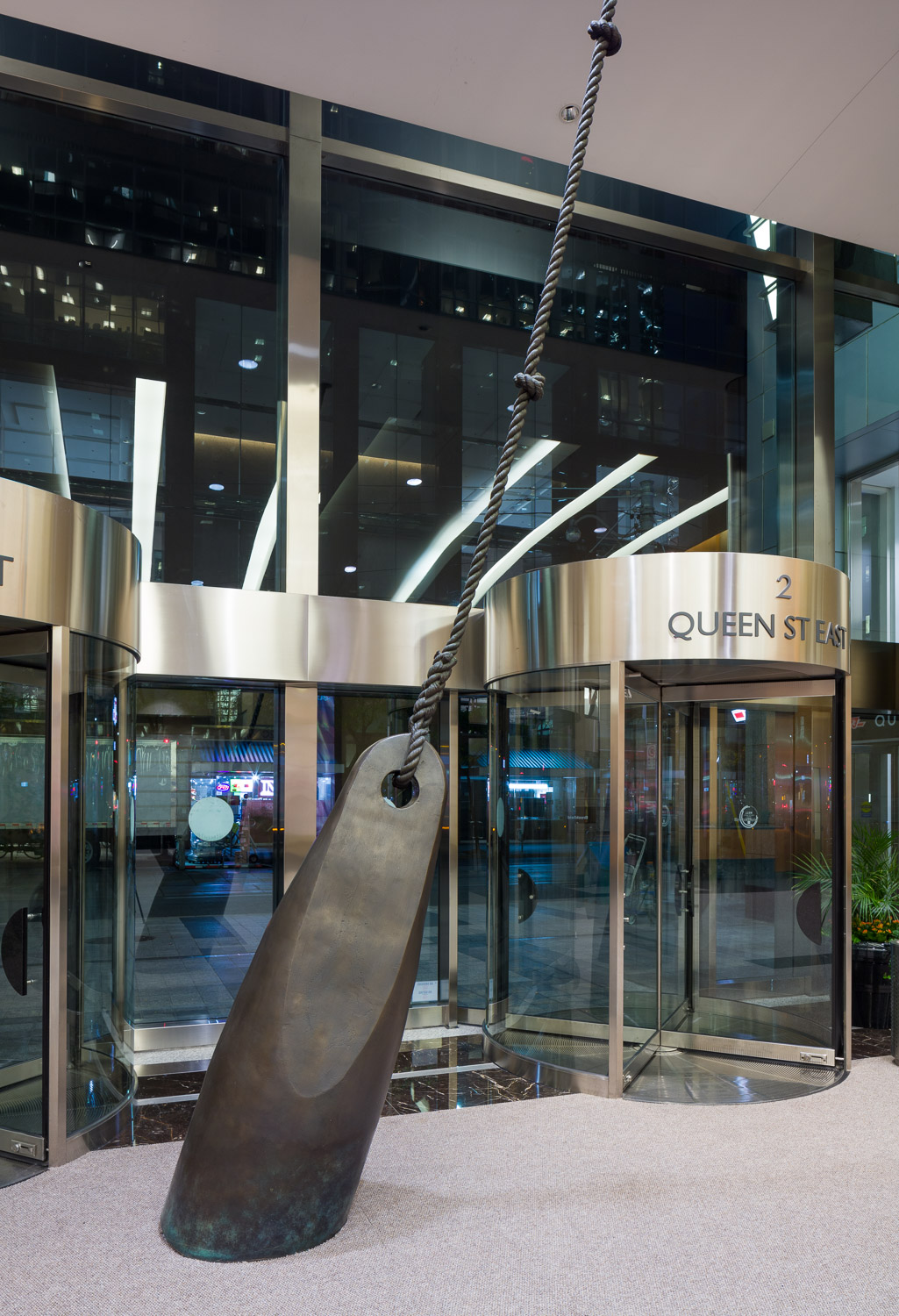The lead line is a weighted rope, knotted or marked, used by seamen to measure the depth of the water. Historically, safe water, or “Mark Twain”, was two fathorns. We have implied by the knotted rope and the modification in scale that this site marks “safe water”.
Search
Safe Water

- Steel
- 2002
- 2 Queen Street East, Toronto
About the artwork
About the artist
In 1972, Colette Whiten graduated from the Ontario College of Art and Design, receiving the Governor General’s Medal in recognition of her fine work. In the same year, she exhibited her first cast piece: a wooden structure filled with fibreglass molds of her friends’ arms and legs. Whiten’s figures express the nature of human existence and are primarily concerned with human interaction, particularly power relationships. The artist is also fascinated with the process of art, often documenting her creative flow through photographs and slides.
Over the years, the focus of Whiten’s practice and subject matter has evolved to include explorations into identity and the duality inherent in cast images, the nature of the art object and art making, and political power or everyday violence. Whiten’s larger scale, sculptural pieces have taken years to make as their many intricate pieces are constructed mainly by hand.
Whiten’s public art commissions include a wall construction with figurative cutouts for the Mental Health Centre, Toronto (1978), an award-winning sculpture for the 1988 Calgary Olympics, Weathervanes for Bankers Hall, Calgary (1990-91), and Tender, at the Worker’s Compensation Office, Simcoe Place, Toronto (1994-95.) Both Weathervanes and Tender were collaborations with Paul Kipps, Whiten’s beloved partner.
Between teaching at York University and the Ontario College of Art and Design, Whiten’s work has been featured in both solo and group exhibitions around the world. In 1991, she was the recipient of the Toronto Arts Foundation’s Visual Arts Award and in 2013, she was awarded a Governor General’s Award in Visual and Media Arts.
Upon earning his BA in Visual Art from the University of Western Ontario, Paul Kipps focused his artistic practice in the realm of sculpture. His works were driven by his interest in alienation, shaped by the often exclusive nature of cultural backgrounds, age, gender, class, or place. Kipps explored these concerns through the making of sound, photography, and three-dimensional structures.
Kipps’ work was exhibited in both Canada and Europe, and has been presented across Canada through a number of collaborative public art commissions with his partner, Colette Whiten. Kipps taught for many years, offered his distinct eye in curating, and continued to create up until his death in 2014.
Fun facts
- For an exhibition with Whiten called Over Taking Over, Paul Kipps brought his concept of a "garden of sound" to life. As a way of coping with his widowed mother's dementia, Kipps began documenting the impact of her condition on his own life, creating soundtracks out of her garbled phone calls and pairing them with sixteen gramophone-like wooden cones.
Engagement questions
- How does this work interact with the environment around it? Does the space amplify or benefit the artwork?
